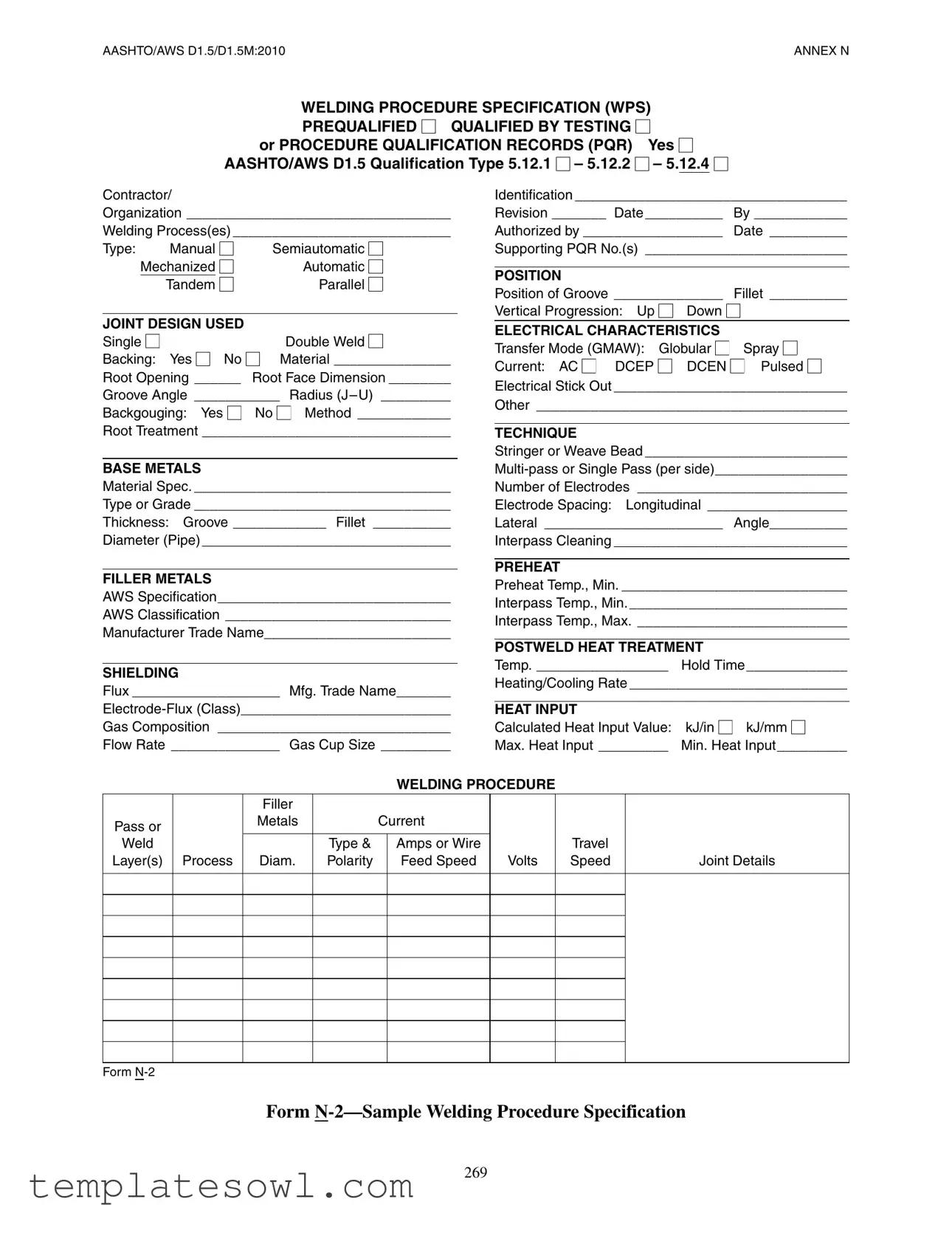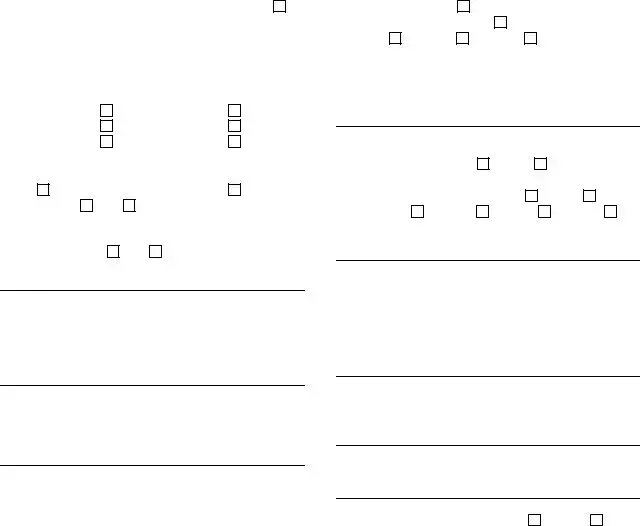What is the N 2 form?
The N 2 form is a detailed document used in the field of welding, specifically in reference to the Welding Procedure Specification (WPS) as per the AASHTO/AWS D1.5 standard. This form outlines the specifications and qualifications required for different welding procedures, which are crucial for ensuring safety and quality in welding projects.
Who needs to fill out the N 2 form?
This form must be completed by contractors or organizations that conduct welding operations. It is typically filled out by welding engineers, inspectors, or qualified personnel responsible for developing and documenting welding procedures. This way, all applicable parameters and qualifications of the welding process are properly addressed.
What information is required on the N 2 form?
The N 2 form requests various details about the welding procedure, including contractor information, joint design and dimensions, base and filler metals specifications, shielding gases, electrical characteristics, and preheat and post-weld heat treatment parameters. Additionally, it asks for the positions of the weld and any required qualifications or supporting documentation.
How does the N 2 form relate to quality control?
The N 2 form serves as a critical component of quality control in welding. By documenting the exact procedures, materials, and techniques, it provides a reference for inspectors and engineers. This ensures that the welding process adheres to established standards and reduces the likelihood of defects, which in turn enhances the overall safety and integrity of the welded structure.
Is the N 2 form mandatory?
The use of the N 2 form is mandated by various codes and standards in the welding industry. Depending on the project and jurisdiction, failing to use the correct documentation may result in penalties or disqualification for contractors. Therefore, it is often a requirement for compliance on governmental and structural projects.
What types of welding processes can the N 2 form accommodate?
The N 2 form is designed to accommodate various welding processes, including manual, semiautomatic, mechanized, automatic, and tandem parallel welding. This flexibility allows it to be used for a wide range of applications, tailored to the specific needs and technologies being employed in a construction project.
How can one ensure that the N 2 form is correctly completed?
To correctly complete the N 2 form, it is essential to refer to the applicable standards, such as AASHTO and AWS. Collaboration with experienced welding engineers or inspectors can help clarify any questions and ensure that incorrect or incomplete information does not compromise the submission. Additionally, the use of a checklist can assist in capturing all necessary data.
What happens after submitting the N 2 form?
Once the N 2 form is completed and submitted, it often undergoes review by relevant oversight bodies or quality control personnel. They will verify the information, assess it against the required standards, and determine if the welding procedure is acceptable. Subsequent approvals may allow the project to proceed while maintaining compliance with safety regulations.
Where can one find the N 2 form?
The N 2 form can typically be found through associations related to welding standards, such as AASHTO or AWS. It may also be available from welding equipment suppliers or as part of training materials for welding professionals. Furthermore, some companies may have their own templates or guidelines for filling out the form correctly.

